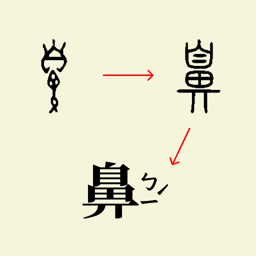Chinese Learning App for Rural Elementary schools
This project, initiated by the former CEO of ChengZhi Educational Foundation, supports Chinese learning in rural schools with limited exposure to characters. As part of a four-person team, including three engineers, I contributed to the full product development and design cycle.
Discovering teacher and students’ needs in rural learning contexts
Interviewed key stakeholders, including a principal and a Chinese teacher with decades of experience in rural schools, to understand their teaching needs.
Thematic Analysis (see below, topics from left to right)
student learning status quo/challenges
instructional methods
desired learning goals for students using the app
visions for app features
Customer profile — supporting our ideation process
Main findings:
Rural Chinese teachers struggle with enforcing correct stroke order and providing differentiated learning, while students face challenges in expanding vocabulary and retaining characters. This highlights the need for tailored, resource-efficient teaching tools.
Ideation and refinement
Proposed solutions for key challenges and used a prioritization framework to identify essential features for the app.
Features selected:
Key features include Zhuyin review (pronunciation, stroke order), stroke order practice with animations, and contextual sentence examples.
Designing for easy integration into class teaching practices
Frequent discussions with key stakeholders helped us iterate quickly, ensuring the app aligned with standardized teaching sequences and required minimal extra effort for teachers to implement.
Design interface — below is the prototype Vers. 3
Character pronunciation.
Ancient character forms.
Stroke display and practice.
Sentence making.
Our instructional sequence
In learning each character, students…
See the evolution of a character (ancient forms)
Listen to its pronunciation
Examine and practice stroke order
Contextualize the character in a sentence
Additional Highlights — multifunctioning in a small team.
I organized all multimodal resources and independently learned to deploy tech tools and AI, enhancing my ability to perform technical work effectively.
Generated and OrganizedTextual Resources
Created and maintained a spreadsheet database with 2,700 Chinese characters, generating definitions and sentences using ChatGPT, and outsourced proofreading to ensure accuracy and appropriate difficulty levels.
*Leveraged Python and spreadsheet Appscripts functions for data manipulation.
Processed Audios
Collaborated with a Chinese teacher/orator to record Zhuyin's pronunciation, and I processed the audio by enhancing clarity and trimming.
Automated Visual Creation
I reached out to Mr. Kou, a Chinese teacher who shares his drawings of distinct characters on Facebook, for usage right of his work.
I web-scraped images of ancient character forms from an open resource and assembled them to form images using Python.
Ex. from left to right means “black,“ “nose“, and “dot“.
Edited SVGs for Zhuyin
*One of my proudest accomplishments:)
Zhuyin (alphabet for Chinese characters) is especially important for 1st & 2nd grade students. However, we couldn’t find any Zhuyin SVG resources online, which are required for the stroke practice feature.
After consulting a font company for technical guidance and multiple days of trial and error, I self-taught how to edit strokes of Zhuyin in SVG format, successfully empowering our engineers to implement stroke practices for Zhuyin.
Conclusion
The app officially launched in April 2024. Chengzhi Educational Foundation has continued to gather teacher feedback from its extensive network of rural educators. After concluding my internship, I created tutorial documents to support new interns, ensuring a smooth transition and continued app development.
Working in a small, cross-functional team taught me
the messy nature of product development in the real world and industry practices on cross-functional team communication
the courage to politely reach out and seek help from professionals who may solve your problems way faster
I also learned to
guide design decisions with evidence and analysis
develop structure in the work I do — make records for easy transfer and SOPs for productivity
leverage technology tools and online tutorials to assist in problem-solving
explore and do experiments with perseverance









